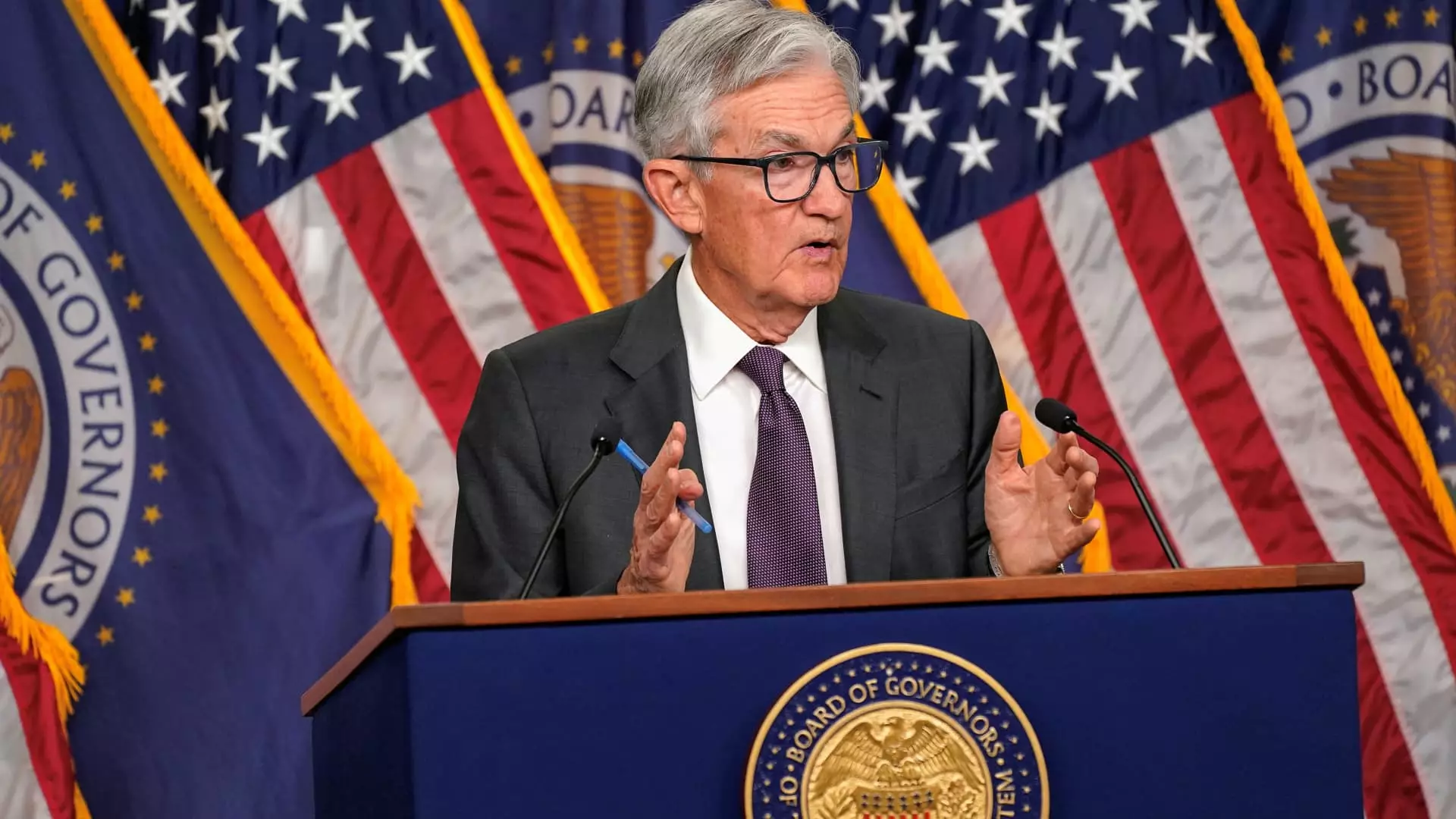In a financial landscape increasingly defined by volatility, the Federal Reserve’s decision to hold the line on benchmark interest rates sends both a message of caution and reassurance. The rate remains nestled in the 4.25%-4.5% range—an unchanged stance since December. This choice embodies the fine balance the Fed aims to strike between fostering economic growth and countering inflation in a climate riddled with uncertainty, particularly stemming from President Trump’s tariff policies. As many economists parsed through the implications of this decision, one undeniable fact emerged: navigating these turbulent waters will not only require a steady hand but will demand profound foresight.
While the Fed’s choice to maintain the rate was largely anticipated by market participants, it is crucial to recognize the undercurrents guiding this decision. The economic implications of tariffs are escalating, with potential ramifications that might snarl economic growth. The Fed acknowledges these pressures, suggesting that while the economy is currently on stable ground, it’s vulnerable to shifts that could force a reevaluation of its monetary strategy.
Economic Projections Reflect Growing Caution
The Fed’s updated economic projections reveal a more tempered outlook for growth. The anticipated GDP growth rate has been downgraded to a modest 1.7% for this year, a reflection of waning consumer spending and looming inflationary pressures. Such projections raise eyebrows—the slowdown is not only a commentary on consumer confidence but a warning sign of the broader consequences of governmental policies that prioritize swift, deregulated actions over careful, deliberate economic strategy.
Despite the complexities, the committee sees potential for a rate cut by mid-2025, reinforcing the idea that the economic environment is far from settled. It seems evident that the Fed is preparing for dual scenarios: one in which the economy remains robust and inflation above target, and another where external shocks trigger swift adjustments. Jerome Powell’s remark about maintaining a tight policy if inflation does not stabilize further heightens this sentiment.
Bond Holdings and Quantitative Tightening: Shifts in Strategies
An intriguing aspect of the recent Fed meeting was not solely the interest rate announcements but the insights into its quantitative tightening (QT) program. The decision to scale back the pace at which the Fed reduces its bond holdings implies a strategic redirection. By permitting only $5 billion per month in maturing Treasury proceeds to roll off its balance sheet, the Fed is admitting that taming inflation may be as essential as nurturing economic growth.
The importance of this approach cannot be overstated, especially given the geopolitical tensions and their potential to rattle the markets. A more conservative withdrawal from bond holdings may help stabilize the economy while giving the Fed leeway to respond nimbly to emerging threats.
Market Reactions: A Double-Edged Sword
Investors greeted news of the Fed’s decision with optimism as the Dow Jones surged over 400 points, an indication that they are cautiously reassured by the prospect of future cuts. However, this reaction could be viewed through a different lens: it highlights the precarious dependence of the markets on the Fed’s actions, often at the expense of a more organic economic recovery.
An era of consistent economic growth driven by government actions, such as tax cuts and deregulation, raises ethical questions. Will such policies lead to a robust and sustainable recovery, or will they simply postpone a necessary correction? The optimistic market response belies an underlying fragility; it signals that investors are reading the Fed’s decisions as a continued promise of support, potentially reducing the urgency for real economic reform.
Consumer Confidence: A Tenuous Landscape
Consumer sentiment, a crucial component of economic health, appears to be faltering. Rising inflation expectations, influenced largely by the fluctuations in tariffs, create a paradox where consumers feel pressured even as spending shows signs of resilience. This duality complicates the Fed’s task, as renewed consumer confidence is critical for revitalizing economic activity.
Critics might argue that the Fed’s cautious approach could stifle growth in an already unstable climate. However, the reality remains that without a solid foundation of consumer trust and spending, any gains seen through temporary cuts could evaporate swiftly. The consumer’s role as an economic engine cannot be overlooked; policies must support their capacity to spend freely without the burden of excessive inflation constraints.
The wider implications of the Fed’s recent decisions explore the interplay between political maneuvers and economic realities. As President Trump’s administration continues to threaten further tariff actions amid ongoing uncertainties, the central bank’s ability to maintain stability could hinge on navigating these external pressures.
As the Fed takes its place on this complex stage, it will need to tread carefully. Balancing support with restraint demands a nuanced understanding of economic currents, and a commitment to safeguarding both employment and price stability as the economic climate evolves.

Leave a Reply